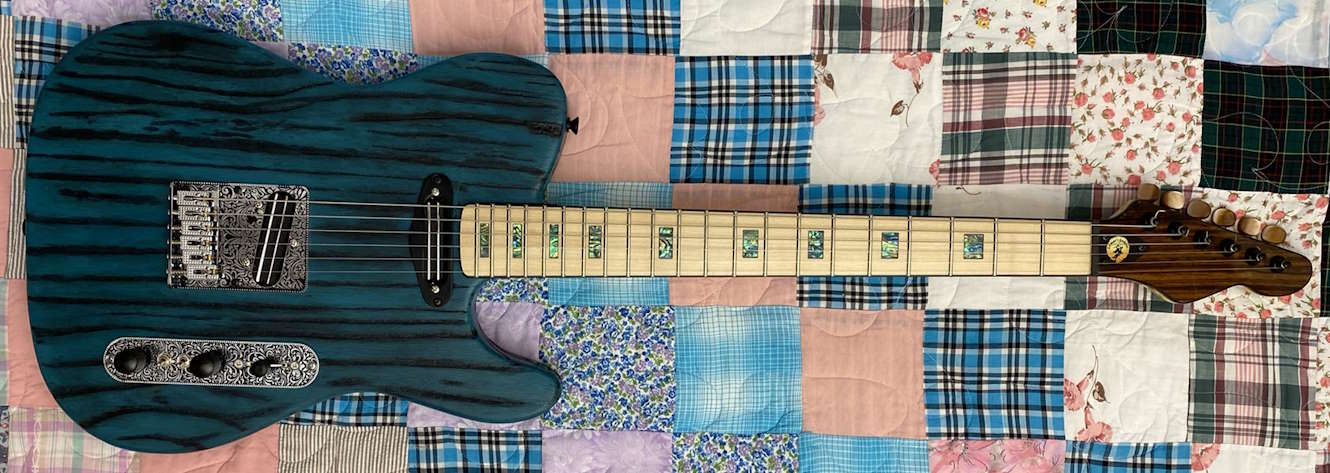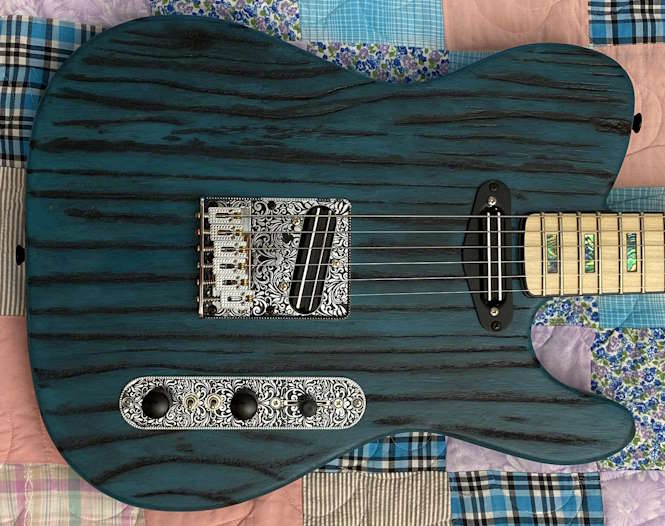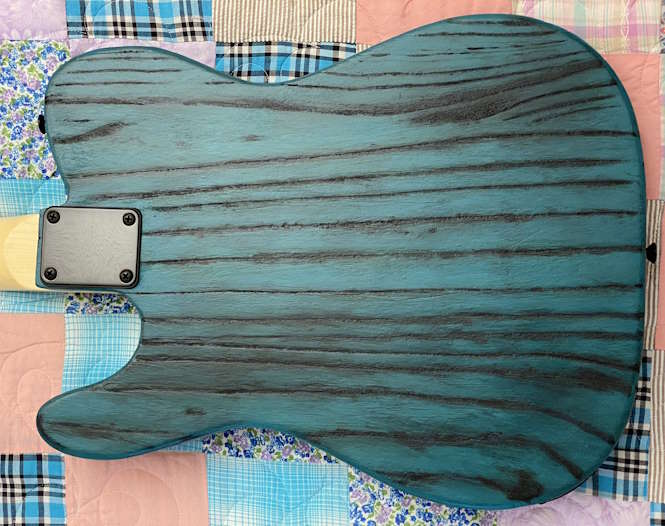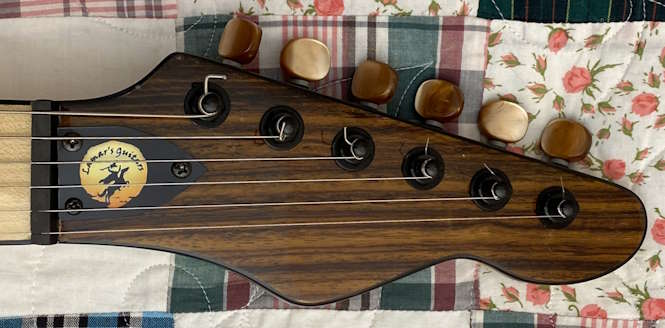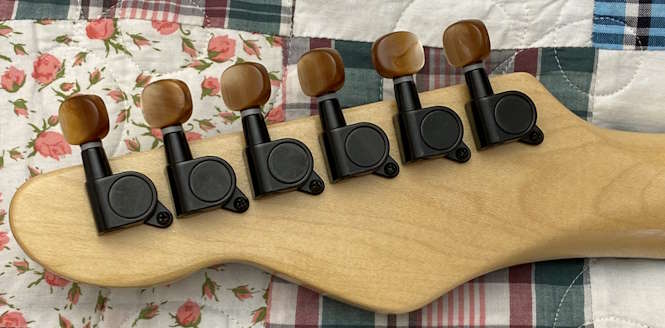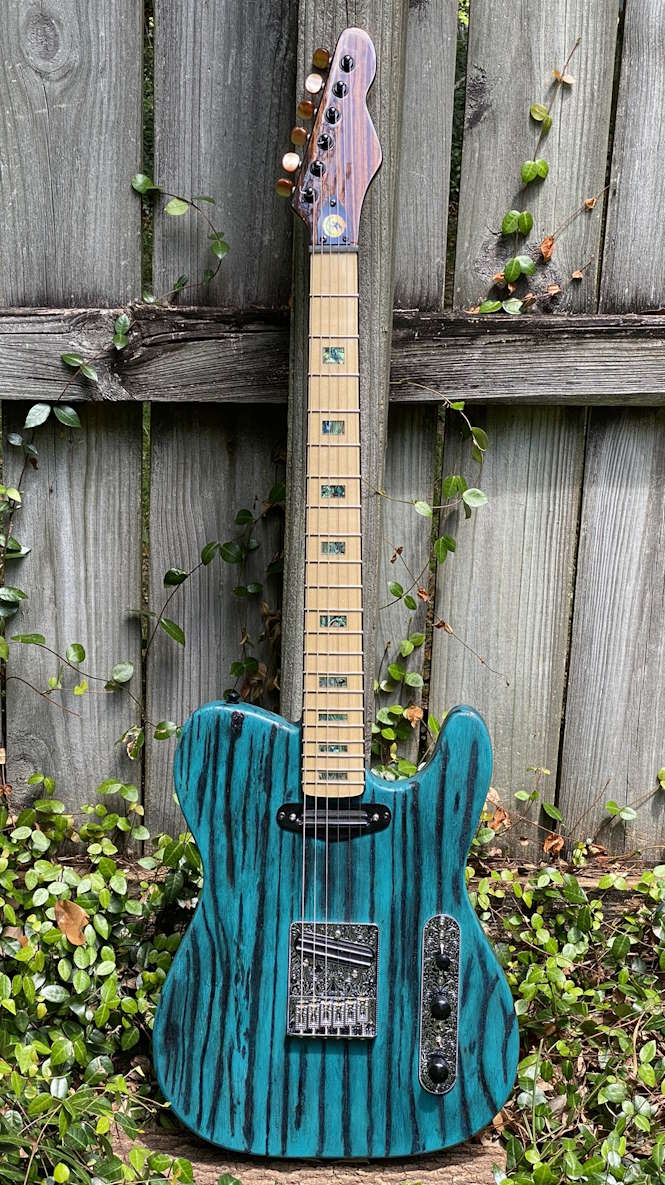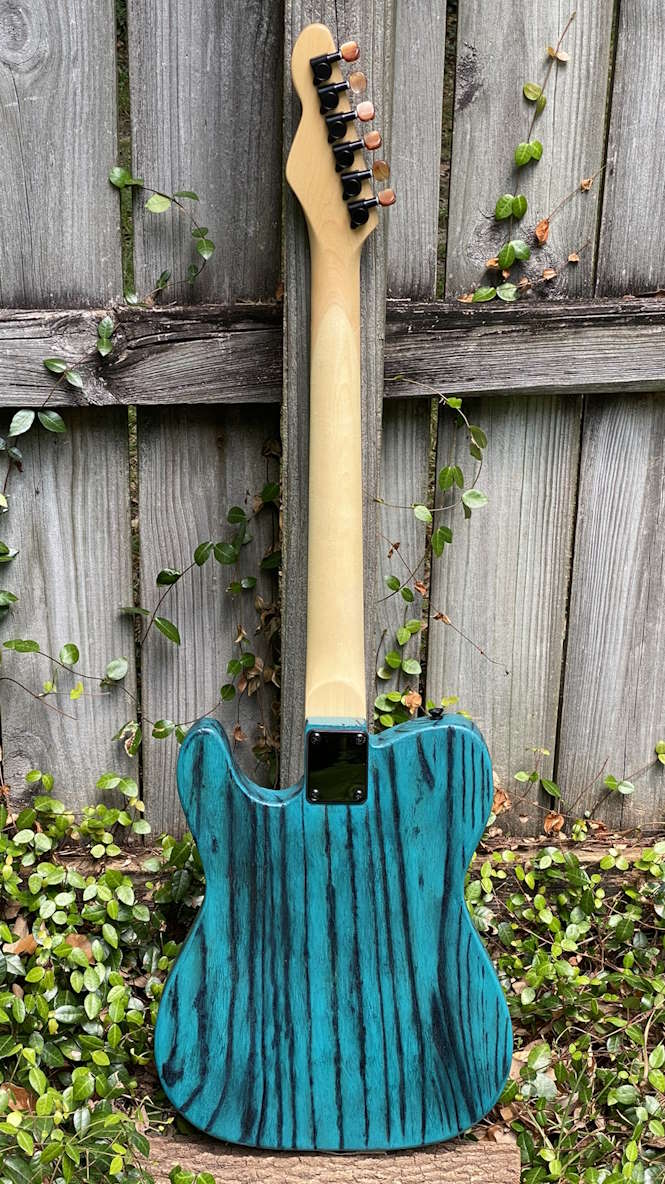 Contact
Contact
Click on pictures for higher-quality images.
Tealycaster 2023
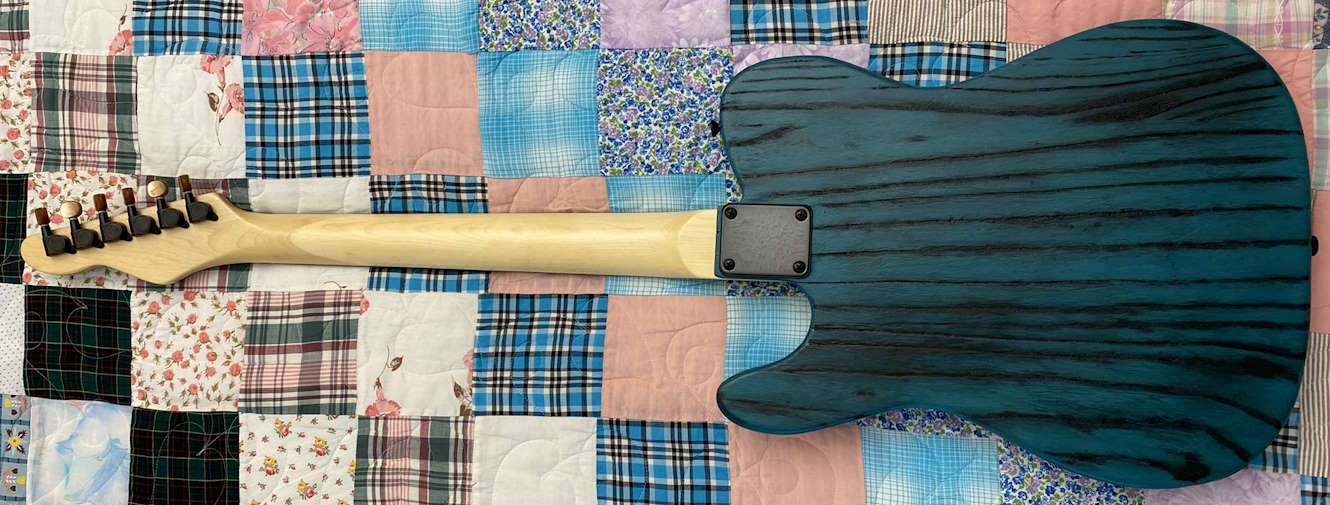
I
have a fondness for making things out of found or repurposed materials,
so when I saw this neck on a GuitarFetish warehouse sale of
damaged/blemished parts I couldn't resist the alure of all that
abalone. It's a 25.5 inch scale, which isn't my preference, but
since I was planning on giving it away that didn't matter. It had
a really thick, hard, and glossy polyurethane clear coat, and that's
where the issues were. There were several spots where it wasn't
leveled well, had gaps, dents, and scratches. Those were
generally repairable with application of some polyurethane or
cyanoacrylate fills and some polishing. It's not perfect, since a
lot of those were tight spots to work in, but the positives far
outweigh the negatives.
The body is Paulownia, a lightweight, if unimpressively-figured wood. This particular body had one major defect, a hole that had been very badly patched. A firm thumb press revealed what could have only been rotten wood that was missed or ignored when the body was pieced together. I excavated the rotten area, packed it with wood pieces and sawdust, and stabilized it with cyanoacrylate glue. I left some of the defect and some smaller defects, since I was planning a distressed finish anyway.
I took a roundabout path to create a distressed or semi-cerused finish similar to some of the Slick guitars on GuitarFetish's site. I used a torch to burn the surface, which preferentially scorched the grain lines. I got some "arctic teal" paint, but teal is a funny color than call fall a little more to the green or blue side of the fence. This was a little more green than I wanted, so I mixed in some blue dye to hop to the other side of the fence, and brushed it on. I then sanded it, which removed paint quickly from the scorched areas while mostly leaving it everywhere else. To further blacken the grain lines I went over them with charcoal pencils and rope. When I was satisfied with the appearance, I hand-rubbed on cyanoacrylate glue to seal everything, while still leaving it rough to sight and touch. I like how the body echoes the blue-green-black spectrum of the abalone inlays on the neck.
I pecked around the Internet until I found a bridge and instrument cover that complemented all this. The pickups are Lil Puncher thin humbuckers from GuitarFetish. I added a pair of small toggle switches to be able to switch each pickup from series humbucker to single coil. Otherwise, it's a standard Tele 3-way switch, single volume, single tone.
With this setup it covers most all of the range of a standard Telecaster, bright but not as brittle as they can sometimes be, plus a nice fat humbucker sound.
After a few months of breaking in, it was passed to one of my nieces.
The body is Paulownia, a lightweight, if unimpressively-figured wood. This particular body had one major defect, a hole that had been very badly patched. A firm thumb press revealed what could have only been rotten wood that was missed or ignored when the body was pieced together. I excavated the rotten area, packed it with wood pieces and sawdust, and stabilized it with cyanoacrylate glue. I left some of the defect and some smaller defects, since I was planning a distressed finish anyway.
I took a roundabout path to create a distressed or semi-cerused finish similar to some of the Slick guitars on GuitarFetish's site. I used a torch to burn the surface, which preferentially scorched the grain lines. I got some "arctic teal" paint, but teal is a funny color than call fall a little more to the green or blue side of the fence. This was a little more green than I wanted, so I mixed in some blue dye to hop to the other side of the fence, and brushed it on. I then sanded it, which removed paint quickly from the scorched areas while mostly leaving it everywhere else. To further blacken the grain lines I went over them with charcoal pencils and rope. When I was satisfied with the appearance, I hand-rubbed on cyanoacrylate glue to seal everything, while still leaving it rough to sight and touch. I like how the body echoes the blue-green-black spectrum of the abalone inlays on the neck.
I pecked around the Internet until I found a bridge and instrument cover that complemented all this. The pickups are Lil Puncher thin humbuckers from GuitarFetish. I added a pair of small toggle switches to be able to switch each pickup from series humbucker to single coil. Otherwise, it's a standard Tele 3-way switch, single volume, single tone.
With this setup it covers most all of the range of a standard Telecaster, bright but not as brittle as they can sometimes be, plus a nice fat humbucker sound.
After a few months of breaking in, it was passed to one of my nieces.
